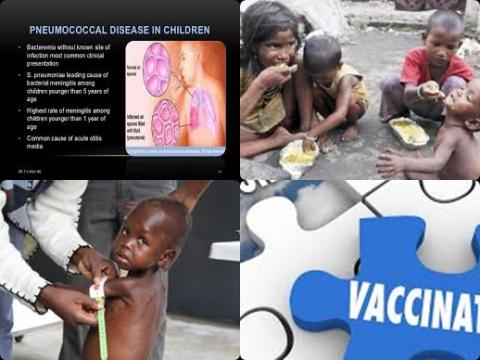
Objectives:
Streptococcus pneumoniae is an intermittent commensal organism in the nasopharynx. Colonisation is a prerequisite for disease and malnourished children are especially susceptible to severe infection.
The goal of this review article is to examine published prevalence rates of pneumococcal colonisation in the upper respiratory tract of chronically malnourished children 5 y of age.
Study design:
This review article included 9 observational studies.
Results and conclusions:
The investigators found the prevalence rate of Streptococcus pneumoniae colonisation in malnourished children during the first month of life ranged from 1.0 to 2.0%, increasing at 2 months to 53.9-80.0%. Carriage remained similar from 3 to 60 months at 64.1-88.0%.
The investigators found meta-analysis showed a pooled prevalence of 67.2% [95% CI = 55.6 to 78.7] in infants 0-3 months of age, 77.9% [95% CI = 68.1 to 87.7] in infants 3-6 months of age and 77.8% [95% CI = 73.9-81.6%] in infants 6-60 months of age.
The investigators concluded in malnourished children the rates of pneumococcal colonisation are higher than in healthy, well-nourished children. Knowledge of colonisation rates can inform policies on vaccination and ancillary interventions during treatment of malnutrition. Future studies should assess the impact of reducing colonisation on disease rates or transmission in these “at-risk” individuals.
Original title:
Nasopharyngeal colonisation with Streptococcus pneumoniae in malnourished children: a systematic review and meta-analysis of prevalence by Smith HC, German E, […], Rylance J.
Link:
https://www.ncbi.nlm.nih.gov/pubmed/30624761
Additional information of El Mondo:
Find more information/studies on food fortification/malnutrition right here.